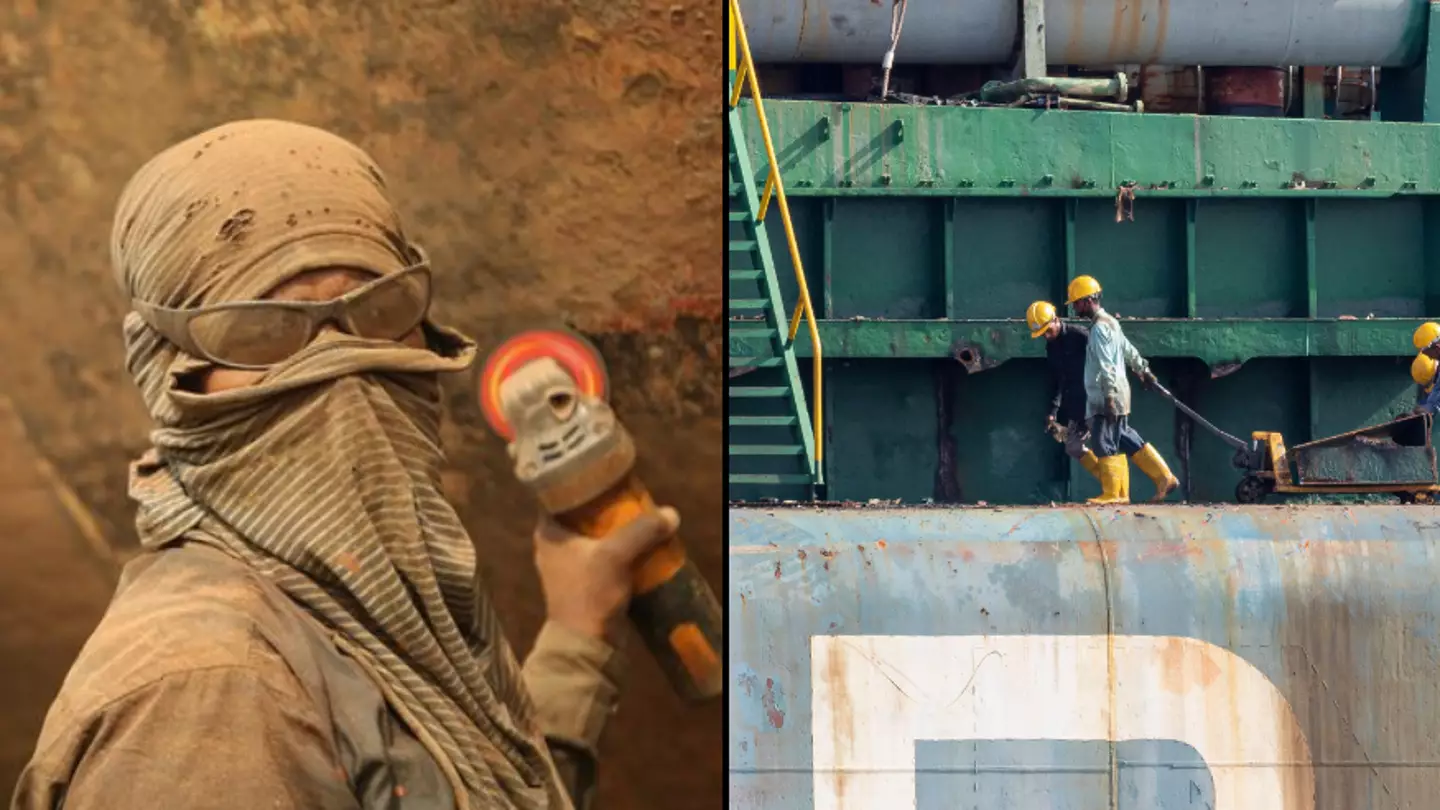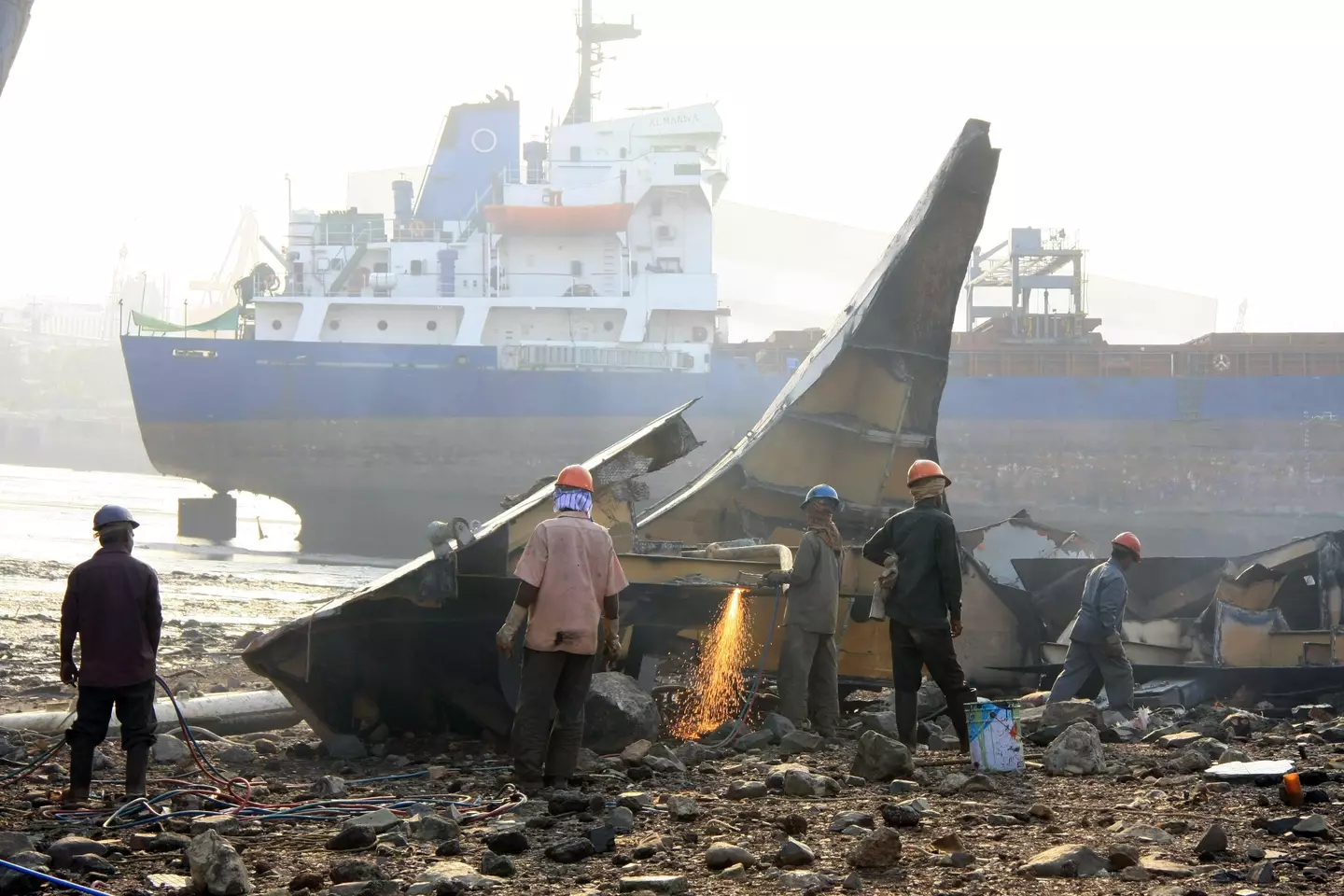
The grim reality of what it’s like to work in the ‘world’s most dangerous job’ has been revealed in shocking detail.
Shipbreaking, as the name suggests, involves cutting up old vessels for scrap metal - and it’s a particularly hazardous task.
When ships have reached the end of their usable life, they’re sent to countries including Bangladesh, Turkey, India and Pakistan, where most shipbreaking workers are situated.
Here the workers will set to work stripping the vessels, but they risk serious injury and death along the way.
Advert
The conditions shipbreakers are forced to work in are often extremely dangerous and fall below decent standards of health and safety. The threat of being crushed or sliced by metal is omnipresent.

Figures from NGO Shipbreaking Platform show that in 2022, at least 10 workers lost their lives and 33 more sustained injuries while breaking apart vessels on the beach of Chattogram, Bangladesh alone.
In 2021, five workers died during the month of August while dismantling vessels in Bangladesh.
The next month in Turkey, two workers died after a rope broke while they were dismantling a ship - this incident was itself just two months after another at the same ship recycling yard which also resulted in the deaths of two men.
Advert
Looking back to 2016, one shipbreaker in Bangladesh was crushed to death by a giant steel plate, and across the next four days - at that same shipyard - three more people died.
Glenn Thompson, assistant national secretary of the Australian Manufacturing Union, spent time observing shipbreakers in Chittagong in 2015.

Speaking to news.au.com, he said the industry, which has thousands of workers and sees around 800 vessels broken down each year, is ‘horrific’.
He went on: “There is just crap laying everywhere. Men working with oxy acetylene torches high on the superstructure of hulks with no safety barriers to stop them slipping and falling.”
Advert
The workers have no access to the sort of basic protective gear that would help keep them safe, such as gloves or masks.
Thompson said workers also come into contact with asbestos, which can cause terminal disease, that has to be removed by hand.
Commenting on shipbreaking, the International Labour Organisation said: "Shipbreaking has grown into a major occupational and environmental health problem in the world. It is amongst the most dangerous of occupations, with unacceptably high levels of fatalities, injuries and work-related diseases."
Topics: World News